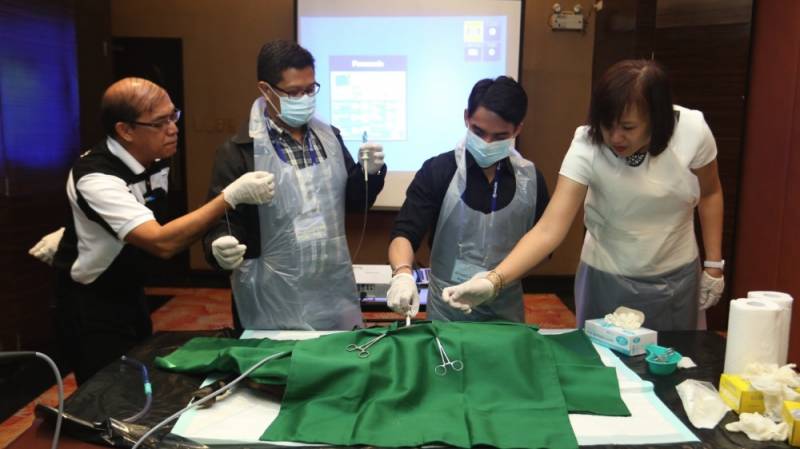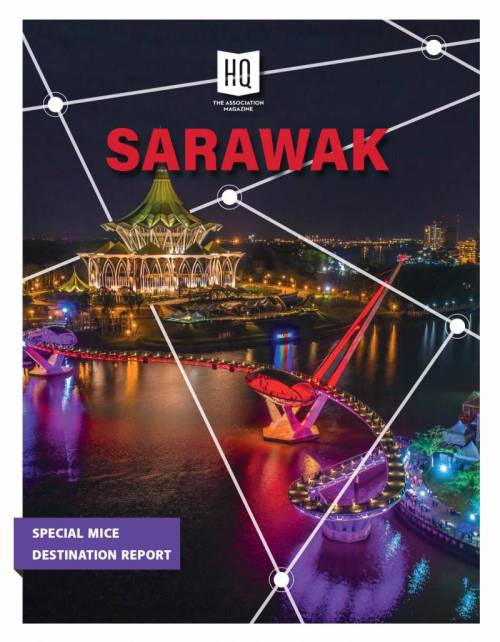Asian Pacific Society of Respirology (APSR)

Established in 1986, the Asian Pacific Society of Respirology (APSR) is committed to the advancement and promotion of knowledge of the respiratory system in health and disease, striving to encourage research, improve clinical practice through teaching, and promote the exchange of knowledge among respirologists (commonly known as lung specialists) in the Asia-Pacific region. Its President, Michiaki Mishima, himself a physician who manages the Department of Respiratory Medicine at Kyoto University, Japan, shares with us the challenges of running a medical association with about 15,000 members from around the world, most of whom from Asia-Pacific such as Japan, Australia, New Zealand, Korea, and Hong Kong.
Interview Katie Lau
 Could you briefly describe the purposes of APSR?
Could you briefly describe the purposes of APSR?
The Society aims to promote and coordinate activities in the field of respiratory medicine, to foster research activities in the same field, to organise and coordinate regular congresses and occasional meetings, to produce regular publications, including a Newsletter, the APSR Respiratory Updates and Respirology, a journal of international repute.
Your annual 19th conference in Bali attracted 2,800 delegates last year. It’s a great turnout. What are the challenges in holding large-scale events like this?
It was wonderful to see a large number of attendees from over 50 countries. The challenges include arranging travel and calculating costs, as we have members from many countries with different native languages, so this can sometimes be an issue.
However, these challenges can be strengths as the diversity of our delegates contributes to the richness of the meeting and allows the sharing of knowledge and innovations. Furthermore, careful event planning and sound budgetary management helps keep costs down, which is an important consideration in our region which has many low- or middle-income countries.
For a regional meeting, flights and travel are often more affordable compared to similar events in Europe or the Americas. Making the conference attractive from the standpoints of high-quality science and education, coupled with wonderfully hospitable people in a lovely environment, is also a success factor. As our meeting increases in size, logistics and organisational requirements increase proportionally in the sense that the APSR is fortunate in working well with local societies, professional and non-profit organisations, and also sponsors. We are also grateful to our members, office bearers and teams for their unwavering support and help.
How do you pick the destination for your annual congress?
The Society has a reputation for friendship and informal discussions often take place among the members about our potential venues for events in different member countries.
Selection criteria include quality of the scientific program Asia-Pacific and global health care providers, quality of the convention facilities, transport, costs, convenience, a budget that ensures financial viability, quality of the host organisation, environment for the Congress, whether previous APSR events had been held there before, and making sure the location provides representation across our region.
What do you look for in venues and destinations for your events?
Our goal is to select venues that allow us to fulfil the aims of the Congress, which include facilitating education and learning to help health care professionals deliver excellent medical care. Modern facilities and equipment costs are important as the APSR is a not-for-profit organisation. The venues should be attractive, safe and able to provide the rooms and space required for the event. Wifi, AV support, and human resource support are also key items. Some delegates would like to relax and have a break in conjunction with the Congress, so safety, security and stability are also vital.
Congress venue is also the face of our society. Very distinguished or trendy places shall be considered. Needless to say, we have to cover all the areas in the Asia-Pacific region to hold our events. Therefore, we are always keeping a balance between different locations to be fair to all national societies throughout the region. If this time the event is held in the northern hemisphere, then the next one will be in the southern hemisphere and vice versa.
What is the most memorable APSR event that you have organised or participated in?
All of the past APSR congresses have been memorable for their quality, fellowship and unique local flavour. Each of them has been unique in providing education, training, social opportunities as well as showing off the marvellous qualities of the people and places in our region. If I had to say which is the most memorable, I would say it is the next one. I always feel very lucky to be part of a vibrant event.
As the President, what do you like about your job?
I very much enjoy being able to establish new and maintain ongoing relationships with people within and outside the Society. I do find that the people in the respiratory world have enriched my life. Their kindness as well as sharp and advanced knowledge also provide me with contacts with different people and their different ways of thinking and culture.
How do you see the future of your association? Any plans for the future?
We see the future of APSR as bright when it comes to promoting lung health in our region and globally. Some of our longer-term plans for current and future health care providers such as young APSR researchers include increasing the number of our publications and communications to better share and disseminate information and the frequencies of educational events and seminars. We also would like to increase training opportunities for young scientists and clinicians actively involved in respiratory medicine in Asia-Pacific region, and improve our interaction with other global lung organisations through FIRS, the Forum of International Respiratory Societies.
In the shorter term, we need help from our busy members and strive to develop ways to help them better contribute to lung health. We are inviting participation in Assembly activities, development of modern educational activities, hands-on workshops and post-graduate courses.
We also look forward to recruiting new members and countries as well as maintaining our current members. For the latter, we have developed a supplementary category of membership called “The Fellow of the APSR”, or FAPSR, to recognise members having more than five years of experience in healthcare or research in respiratory medicine or related disciplines who can help mentor future Asia-Pacific leaders in lung health care.
Other Articles
About Us
Supported by the Union of International Associations (UIA), the International Association of Professional Congress Organisers (IAPCO) and the Interel Group, the global public affairs and association management consultancy, Headquarters Magazines serve the needs of international associations organising worldwide congresses.















